21 Jan 2014
Are Most Illegal Drug Users Employed?
A US government study on drugs in the workplace has caused some business owners and community activists to raise questions about medical marijuana policies.
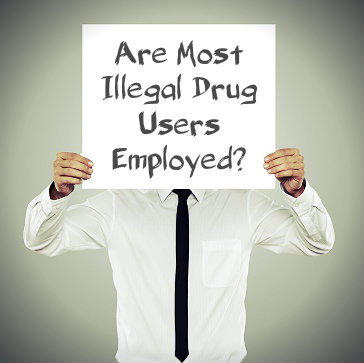 Annie Short, the manager of a Wisconsin-based wellness program, recently gave a talk called “Drug Abuse and the Cost to Businesses” at a wellness council luncheon. She urged her community to rethink the state’s consideration of legalizing marijuana. Because over 70 percent of individuals using illegal drugs are employed, the manager’s discussion posed a thought-provoking question: Are employers willing to let those drug abusers perform public services, such as bus drivers, police officers and pilots?
Annie Short, the manager of a Wisconsin-based wellness program, recently gave a talk called “Drug Abuse and the Cost to Businesses” at a wellness council luncheon. She urged her community to rethink the state’s consideration of legalizing marijuana. Because over 70 percent of individuals using illegal drugs are employed, the manager’s discussion posed a thought-provoking question: Are employers willing to let those drug abusers perform public services, such as bus drivers, police officers and pilots?
Short shared some statistics from a U.S. Department of Labor, Small Business Administration and the National Institute on Drug Abuse survey.
Workplace Drug-Use Stats:
- Employees who are substance abusers cause 40 percent of accidents that happen on the job
- Due to lost time, health care cost, worker’s compensation and accidents, drug abusers cost employers an estimated $81 billion annually
- Drug users are more likely to ask for time off, have repeated absences and be late for work
- Drug users are five times more likely to make a worker’s compensation claim
Employees Using Drugs And Stealing At Work?
Statistics from a national cocaine helpline reported that 75 percent of callers admitted to using drugs while working. They also reported that drugs had a noticeably adverse effect on their ability to complete their jobs. Eighteen percent of callers reported stealing from co-workers and employers to support their drug habits.
Drug-Free Changes For The Workplace
Community leaders and advocates against the legalization of marijuana have a clear message: Employers and companies must make a drug-free workplace a top priority. Employers should implement policies that have clear and strict discipline, with termination for employees who are found to be using drugs while working.
In order to have a workplace that is drug-free, employers should implement employee education, a substance abuse support program, training and regular drug testing.
Read More On What You Should Know About Substance Abuse In The Workplace
You probably have a picture in your mind when you hear the word alcoholic: an older man—ragged clothing, penniless, maybe homeless. We all have our prejudices about addicts, drug abusers, and people who drink too much. The truth is, however, that someone who drinks too much could be just about anyone.
Sometimes that person who is headed down the path to alcoholism doesn’t appear at first glance to have a problem. It might be someone who is well off and has a great job. It could be a young woman. It could be a mom or a wife. Alcoholism is not restricted to the stereotype, and more women are drinking now than ever before.
If you suspect at all that your mom or the mother of your children is drinking more than is normal, or if you suspect it in yourself, take note. Know the signs of early drinking problems as well as the effects of alcoholism in women and step in to help, or get help, before it goes too far.
Has Drinking Become A Secret Habit?
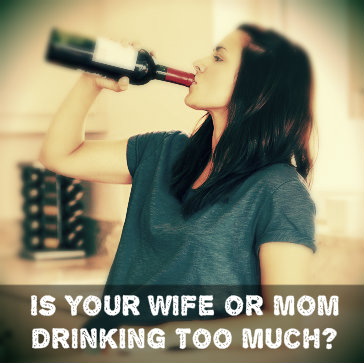 For women who are home all day, with or without the kids, drinking in secret is a real possibility. She can have a glass of wine with lunch—or two or three—sober up when it’s time to pick up the kids, and no one is the wiser. If you are the secret drinker, that fact in itself indicates a problem. Hiding a habit is always an early sign of problem drinking. So how can you tell if your spouse is hiding this habit from you? Look for the leftovers. If wine disappears from the fridge or you find stashed liquor bottles around the house or in the recycling bin, something is amiss.
For women who are home all day, with or without the kids, drinking in secret is a real possibility. She can have a glass of wine with lunch—or two or three—sober up when it’s time to pick up the kids, and no one is the wiser. If you are the secret drinker, that fact in itself indicates a problem. Hiding a habit is always an early sign of problem drinking. So how can you tell if your spouse is hiding this habit from you? Look for the leftovers. If wine disappears from the fridge or you find stashed liquor bottles around the house or in the recycling bin, something is amiss.
Is Drinking Getting In The Way Of Responsibilities?
A classic sign of a drinking problem, or any substance abuse problem, is that it interferes with daily life. If your work-at-home or stay-at-home mom or wife is slacking on her usual responsibilities, something could be up. Maybe the laundry is piling up more than usual, or the house is not as clean as it used to be. Perhaps the kids get picked up late one time too often. If there are valid reasons for these slips, such as new or added responsibilities, that’s one thing; if you can’t see any reasonable explanation and you suspect drinking, you could be right.
Can She Have Just One Drink?
How do evenings look in your home? Does your spouse have one glass of wine with dinner or does she struggle to limit herself? The compulsion to drink more and more is a clear sign of a problem. If she constantly says she will have just the one, but always stretches that to two or more drinks, she is on a dangerous path. When you try to limit your drinking, but can’t do it, you are on the road to problem drinking.
Is She Defensive When You Talk About Drinking?
Someone who is drinking too much, but is in denial about it, is likely to get defensive when you try to have a discussion with her. Bring it up and open the way for a talk. If she acts unreasonably defensive and gets angry if you try to suggest she curb her drinking, there may be a problem. Problem drinkers will naturally have a hard time admitting this fault, but she needs your help. Press the issue and point to the signs that demonstrate a problem. Ignoring it will not make it go away, and eventually someone will get hurt.
If you or someone you love needs help with alcohol or drug addiction, contact us now at 855-763-6488 and let us help you start a life of recovery and freedom!
Read More On How To Know If I’m Enabling The Addict In My Life
Emotion regulation skills are the skills that people rely on to process their emotions and control their reactions to both everyday circumstances and extraordinarily stressful circumstances. Broadly speaking, people who lack fully developed forms of these skills have increased risks for getting involved in drug use and eventually developing significant drug-related problems. In a study published in September 2013 in the journal Drug and Alcohol Dependence, researchers from four U.S. institutions examined the interaction between emotion regulation and drug-related risks on a more detailed level. These researchers identified specific emotion-processing styles that can boost or lower a person’s chances of using and abusing drugs.
Range Of Emotions And Emotion Regulation
 All healthy human beings experience a range of emotions. Some of these emotions, commonly referred to as positive emotions, tend to support a sense of well-being and increase a person’s ability to interact well with others and maintain a fruitful daily routine. Examples of emotions commonly viewed as positive include love, joy, interest, hope, gratitude and certain forms of pride. Other emotions, commonly referred to as negative emotions, tend to destabilize a sense of well-being, decrease the quality of a person’s social interactions and make it more difficult to establish an effective routine. Examples of emotions commonly viewed as negative include hatred, anger, jealousy, sadness, helplessness and hopelessness.
All healthy human beings experience a range of emotions. Some of these emotions, commonly referred to as positive emotions, tend to support a sense of well-being and increase a person’s ability to interact well with others and maintain a fruitful daily routine. Examples of emotions commonly viewed as positive include love, joy, interest, hope, gratitude and certain forms of pride. Other emotions, commonly referred to as negative emotions, tend to destabilize a sense of well-being, decrease the quality of a person’s social interactions and make it more difficult to establish an effective routine. Examples of emotions commonly viewed as negative include hatred, anger, jealousy, sadness, helplessness and hopelessness.
Despite the rudimentary labeling of these various emotional states, healthy individuals typically experience a mixture of “positive” and “negative” emotions, and benefit from both in appropriate settings. Emotion regulation is the process that allows people to do such things as analyze their current emotional states, consciously or unconsciously make decisions to change their emotional states, integrate their emotions and thoughts, and use emotions to guide or modify behavior. However, not all people successfully use the regulation process to deal with their emotions in healthy ways. Instead, when they feel strong emotions (especially negative emotions), they lose the ability to control their reactions and enter a state called emotional dysregulation.
Emotional Dysregulation’s Impact On Mood
As a result of their problems with emotional control, people affected by emotional dysregulation develop a form of mood instability that manifests in two main ways. First, they experience unusual and erratic shifts between emotional states (i.e., mood swings), especially states that don’t normally appear together in a short span of time. Emotionally dysregulated individuals also tend to experience unusually intensified forms of emotion that appear out of context for a given situation.
Emotional Dysregulation’s Impact On Drug Use
In the study published in Drug and Alcohol Dependence, researchers from the University of Southern California, Drexel University, Temple University and Children’s Hospital Los Angeles examined the connection between emotional regulation abilities and drug use risks among teenagers and young adults between the ages of 16 and 25. They performed this examination by interviewing 560 people in this age group with a recent history of abusing prescription drugs such as opioid painkillers and sedative-hypnotic medications. The interviews also contained questions designed to identify the use of illegal/illicit drugs such as cocaine and heroin. The researchers decided to conduct their study because of the lack of available information on the connection between emotional coping styles and drug use patterns in the targeted age group.
Four Styles Of Emotion Regulation And Those Who Are More Likely To Use Drugs
After examining their data, the researchers found that the study participants had four distinct styles of emotion regulation: a suppressing style designed to avoid dealing with strong emotions; a coping style that relies on the intervention of others for its effectiveness; a coping style that relies on self-generated efforts; and a proactive style that seeks to change the situations that produce stress or unpleasant emotional states. They also found that two of these styles—emotional suppression and reliance on others to deal with strong emotions—are clearly associated with increased risks for developing dangerous patterns of prescription or illicit/illegal drug use. By comparison, people with a proactive style of emotion regulation, in particular, have relatively low risks for participating in these drug use patterns.
Hope For Future Treatments To Prevent Drug Abuse
The authors of the study published in Drug and Alcohol Dependence believe they are one of the first research teams to demonstrate that the use of certain emotional coping styles can increase any given individual’s chances of developing significant drug problems. They also believe that their work can form the basis for future research that ultimately provides a real-world improvement in the ability to treat and prevent drug abuse and drug addiction in teenagers and young adults.
Read More About If Inattention And Impulsivity Increases The Risks For Stimulant Abuse
When Colorado’s new law legalizing the use of marijuana went into effect there were mixed feelings about the consequences. Some opponents of the legalization argue that more children will become addicted to the drug at a younger age. They also caution that marijuana is a “gateway drug” to harder drugs like heroin and cocaine, and that it is known to cause health and psychological problems. What are Colorado’s laws that will aid in controlling marijuana consumption, keeping it in the hands of responsible individuals who are of age?
The Laws And Ways Of Obtaining Pot
Colorado actually has two sets of marijuana laws on the books. The laws for recreational use went into effect on January 1, 2014, but medicinal use has been legal since November 7, 2000. Not only are there different laws but there are also different locations for obtaining pot, with medicinal users getting it from dispensaries and recreational users going to newly opened shops.
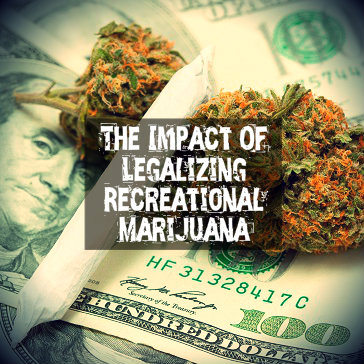 The main reason for the separate laws is the taxes levied against recreational users. Though medicinal users pay less taxes, they also have to get a Colorado Medical Marijuana Registry identification card, otherwise known as a “red card,” which costs $90 to obtain and to renew. (The price will be lowered to $15 in February 2014.)
The main reason for the separate laws is the taxes levied against recreational users. Though medicinal users pay less taxes, they also have to get a Colorado Medical Marijuana Registry identification card, otherwise known as a “red card,” which costs $90 to obtain and to renew. (The price will be lowered to $15 in February 2014.)
Colorado law bans the consumption of marijuana in public places, driving under the influence and taking the drug out of state. The state has also made it easier to win convictions against drivers who caused accident or injury while under the influence of drugs. The legal age of use is 21.
Recreational users can legally grow and possess up to six plants, up to one ounce of cultivated marijuana while traveling, and give a gift of up to one ounce to those 21 and up. Medicinal users can grow six plants as well, can possess up to two ounces of cultivated marijuana and can also gift up to an ounce to others who are at least 21.
Legal Marijuana Possibly Bringing In Big Bucks
Those who are celebrating the new law are optimistic about the revenue that the retail stores will generate. Research conducted by ArcView Market Research, a company that tracks data from the marijuana industry, reported that medical marijuana generated $1.4 billion in 2013. The researchers predict that number to grow to $2.34 billion in 2014, thanks to the new laws in Colorado and those in Washington, which will have its own law legalizing marijuana that will go into effect later this year. State officials predict that marijuana sales will generate an estimated $67 million in annual tax revenue.
Legal Marijuana’s Impact On Future Abuse And Addiction
Whether Colorado residents are for or against the legalization of marijuana, the impact of legalization on abuse and addiction could be seen for years to come.
Read More About The Pros And Cons Of Legalizing Recreational Marijuana And What It May Do For The Economy Of Our Country And The Health Problems Of Users
15 Jan 2014
How Willing Are You To Recover From Addiction?
“Under the lash of alcoholism, we are driven to A.A., and there we discover the fatal nature of our situation. Then, and only then, do we become as open-minded to conviction and as willing to listen as the dying can be. We stand ready to anything which will lift the merciless obsession from us.” (A.A. Twelve Steps and Twelve Traditions, 24)
Are You Ready For Recovery?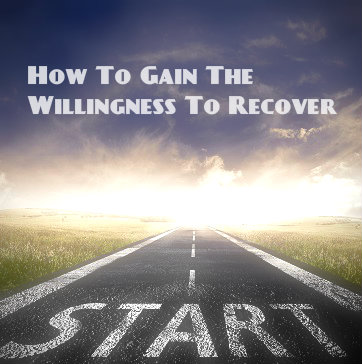
Life in recovery isn’t easy. It isn’t easy to figure out how to live without our highs. We don’t know if we can even imagine it—without them we feel raw, we feel unprotected. And then there is the sheer work of recovery. And it is work. We are expected to overhaul our lives, structuring our days around working the Steps, attending meetings, calling our sponsors and performing service. And this says nothing of the emotional work we know we’re in for. It’s painful, stressful and straining to have to face the worst parts of ourselves and our most tragic memories. Are you ready for that?
None of us are. We see the 12 Step Program before us and wonder how it would even be possible. How does anyone accomplish this? And why do they want to? Why does this seem like a better idea?
Where Do We Find Willingness To Recover From Addiction?
We are told that the only requirement for recovery is a willingness to stop doing what we’re doing. But how do we achieve this state of mind? How do we find that level of motivation? The willingness comes when we start to match up the reality of our lives in addiction with the prospect of our lives in recovery. Look honestly at the pain, the desperation, the fear, the self-loathing and the hopelessness. Is your addict life of sitting around all day getting high really the easier, more comfortable way?
We come to the point of realizing that as challenging as recovery might appear, it is something worth working toward and fighting for. Our addiction life wasn’t easier—lazier, maybe, but not easier. What we have before us is a solution, a life preserver. We have the opportunity to reach for it, and see what we’re made of, and what our Higher Power can do for us. Is it comfortable? No, but comfort doesn’t accomplish much. It’s time to get a little comfortable with being uncomfortable.
The Quest For Freedom From Addiction
We may not believe ourselves worthy or capable of great things. Understandable. But many of us can identify with the desire to be freed of pain. The addict life is killing us. If it hasn’t yet taken our bodies, it is certainly going hard after our souls. We must believe that there is something more. We may not be rich or famous, but perhaps we could be free.
This desire for freedom becomes the foundation of our willingness. We begin to see that we don’t, at this early stage, need to figure out how we are going to accomplish recovery. We see large groups of people doing this recovery thing and they don’t look that different from us. They’re not super humans or particularly special. They have stories that sound a lot like ours, actually. And they seem happy. Their eyes are clear and they’re talking about all of the miraculous changes they have experienced. They are saying, “just take this thing one day at a time.”
We don’t need to know how we will do it or how we will keep it going; we do need the willingness to say “yes” to recovery today. Are you willing?
If you’re ready, ready for a new life of freedom and sobriety, contact drugrehab.us today at 855-763-6488!
Read More About Former Addicts Becoming Advocates For Recovery
When it comes to clinical depression, it’s typical to think of it as a disorder that largely affects women. However, men suffer from depression too, and it has the same profound impact on their mood, energy levels, and quality of life. Just as with women, it’s common for men with depression to abuse substances – particularly marijuana, stimulants and alcohol abuse – as a means of coping and alleviating symptoms.
While women are more likely than men to suffer from clinical depression [1], as many as six million American men experience symptoms every year [2]. Symptoms of depression in men sometimes don’t mirror those found in women. Research indicates that males may not always struggle with overwhelming sadness or excessive guilt. Instead, their symptoms more commonly include fatigue, anger, irritability, and sleep disturbances [3].
The Depression And Substance Abuse Connection
Depression and substance abuse frequently occur together. For example, it’s estimated that 40% of all people with depression struggle with alcohol abuse [4] – that’s a staggering statistic. Depressed men may also smoke marijuana, which can elicit feelings of relaxation and numb overwhelming negative emotions, like irritability.
While alcohol and marijuana are commonly abused, some depressed men abuse stimulants, like cocaine, speed, or prescription medications used to treat ADHD and narcolepsy. These drugs can produce a pleasurable high that can offset symptoms. For instance, a depressed man may take a stimulant medication, like Adderall or Ritalin, in order to find the energy to go to work.
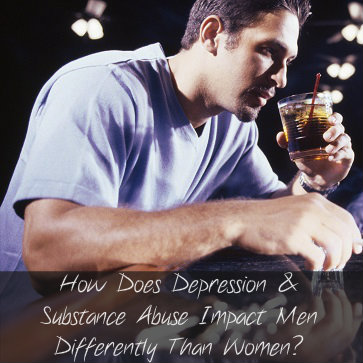 In some cases, depression symptoms appear before a substance abuse problem. Feelings of helplessness or worthlessness lead some individuals to self-medicate with substances. Initially, doing so seems to numb or relieve symptoms. However, in reality, many substances negatively affect brain chemicals linked to mood regulation. Many men drink or use drugs to feel better, sadly end up feeling worse. Rather than stop, he continues to drink or use in order to get high.
In some cases, depression symptoms appear before a substance abuse problem. Feelings of helplessness or worthlessness lead some individuals to self-medicate with substances. Initially, doing so seems to numb or relieve symptoms. However, in reality, many substances negatively affect brain chemicals linked to mood regulation. Many men drink or use drugs to feel better, sadly end up feeling worse. Rather than stop, he continues to drink or use in order to get high.
This vicious cycle can also start with substance abuse. In particular, depressant substances, such as alcohol, lower levels of serotonin. Serotonin is one of the chemicals in the brain that helps keeps mood stable. Over time, the alcohol abuse may actually trigger or contribute to symptoms of depression. Chronic stimulant use is also linked to depression. An addicted male will suffer withdrawal, usually marked by a range of uncomfortable symptoms which include depression.
Why Men Don’t Seek Treatment For Depression As Often As Women
In the U.S., women are diagnosed with depression as anywhere from two to four times more frequently than men [5]. This gap may stem from several factors, including:
Traditional ideas about men – Traditionally, emotional expression hasn’t been highly valued among males. Expressing sadness, frustration, or helplessness can be – and often is – seen as a sign of weakness or lack of discipline. A man may hesitate or refuse to seek depression and substance abuse treatment because he worries it will damage his masculinity. Preconceived ideas about men and substance use can play a role as well. For instance, having a few beers after work every night may not only seem normal, but also expected, especially if a man’s father or grandfather did the same.
Lack of knowledge – It’s likely that some men don’t seek treatment for depression or substance abuse because they’re simply not aware they have a problem. It can be easy to write off negative feelings as a temporary setback or a normal reaction to severe stress or a major loss. A man may believe that if he just keeps pushing forward his emotions will eventually stabilize.
Substance abuse can be hard to recognize as well. This is particularly true if he’s abusing prescription drugs. He may take them with the belief (or rationale) that they’re much safer than street drugs or okay to use just because they’ve been prescribed by a physician. Likewise, a depressed substance abuser may not realize that seemingly harmless and more acceptable substances like marijuana and alcohol can alter the brain over time and lead to an addiction.
Lack of motivation – Experiencing a lack of motivation is one of the many symptoms of depression. A person can feel as though he has no energy, making it a challenge to get off the sofa – much less seek professional help.
Stigma – Sometimes men won’t seek treatment because they want to avoid the stigma of having a “mental illness”. There’s stigma linked to substance abuse as well. It’s hard to ask for help when a man believes others will be quick to label him as an addict. Drug abuse, in particular, carries a strong stigma that potentially affects relationships and work.
The Importance Of Mental Health Treatment
Psychiatric disorders, like depression and substance abuse, require treatment just like any medical condition such as heart disease, diabetes, or cancer. Mental health conditions are complex disorders that have a number of causes, some of them biological in nature. Although it can be difficult to reach out for depression and substance abuse treatment, professional help is crucial and can be highly beneficial.
Co-occurring conditions have a significant negative impact on your life. For example, your relationships are probably suffering. There may be frequent conflicts with those you love. You may be unable to be the father you want to be to your children. Additionally, depression and drug or alcohol abuse affect sexual performance, which can further strain your relationship with a significant other or spouse.
Work performance is likely suffering, too. Substance abuse combined with depression may make you more prone to calling in late or sick. Frequent absences can have serious consequences. It can also be harder to perform assigned tasks and complete important projects, leaving them undone or forcing colleagues to pick up the slack. When workplace performance suffers, you’re less likely to hold onto a job and may have trouble finding a new one.
Depression and drug or alcohol abuse also adversely impact your physical and emotional health. For example, depression has been linked to a higher risk of heart disease in men [6]. Research suggests that men with heart failure who had moderate to severe depression were nearly four times more likely to die than those who weren’t depressed [7]. In addition, depression and substance abuse are both connected to a higher risk of suicide. It’s estimated that, overall, men are four to five times more likely to complete suicide than women [5]. This is largely due to the fact that males are more likely to use more lethal methods, such as shooting themselves.
Depression And Substance Abuse Treatment
If you have symptoms of depression and abuse substances, you need treatment. Contact a mental health professional or drug treatment facility that offers “dual diagnosis” treatment. If you’re not sure where to start, ask your primary care physician for a referral. Once you’re working with a mental health professional, be open about all symptoms and fully disclose your substance abuse habits. He or she will diagnose you and develop a treatment plan that may include residential or outpatient therapy, support groups, and, if necessary, medication.
Don’t let life fall apart because of your symptoms. Help is available. Reach out now for depression and substance abuse treatment to reclaim your physical and emotional health.
Read More About Depression And Drug Treatment
References:
[1] http://www.nimh.nih.gov/statistics/1mdd_adult.shtml
[2] http://www.apa.org/research/action/men.aspx
[3] http://www.apa.org/research/action/men.aspx
[4] http://www.niaaa.nih.gov/news-events/news-releases/national-survey-sharpens-picture-major-depression-among-us-adults
[5] http://www.ncbi.nlm.nih.gov/pmc/articles/PMC3140791/#!po=4.16667
[6] http://circ.ahajournals.org/content/early/2013/10/30/CIRCULATIONAHA.113.002065.abstract.html?ijkey=xgzTuA4JxivZbxO&keytype=ref
[7] http://newsroom.heart.org/news/depression-in-heart-failure-patients-233191
13 Jan 2014
Demi Lovato’s Battle With Addiction And Mental Illness – How Her Candid Story Can Help Teens
Actress and singer Demi Lovato has made a name for herself starring in television shows like The X-Factor and Sonny With A Chance. However, recently the 21-year-old star has been promoting her new memoir, Staying Strong: 365 Days a Year. The book details the young celebrity’s battles with several mental health conditions, including a drug addiction, eating disorder and alcohol abuse.
Lovato’s Personal Struggles
In her memoir and through a series of interviews, Lovato revealed her disorders as well as her triumphs. They include the following:
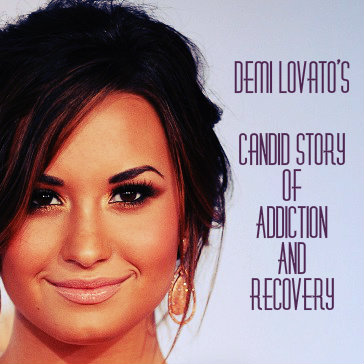 Drug addiction – The star has recounted how, during the peak of her addiction, she snorted cocaine practically every 30-60 minutes.
Drug addiction – The star has recounted how, during the peak of her addiction, she snorted cocaine practically every 30-60 minutes.- Alcohol abuse – Lovato reports that by age 19 her alcohol abuse was serious enough that she was drinking a soda bottle filled with vodka in the morning.
- Cutting – She’s spoken openly about her struggle with self-mutilation, which began at the tender age of 11. Lovato says she made cuts on her wrists to cope with negative emotions.
- Eating disorder – The young celebrity recalls how she first battled an eating disorder around age 12 or 13, although she began to worry about her body image earlier. This was triggered by becoming the target of bullies who cruelly labeled her as “fat.” Over the years, her self-destructive behaviors included compulsive overeating as well as anorexia and bulimia.
- Bipolar disorder – Lovato recounts how, initially, manic periods made her a productive songwriter. However, the cycles of mania and depression also made it painfully difficult for her to control her emotions.
By age 19, these conditions had taken a serious toll on Lovato’s well-being. She reports having a nervous breakdown during a concert tour. At one point, she reportedly physically struck one of her back-up dancers. That’s when her family and management team did the intervention that compelled her to quit the tour and enter into treatment. Lovato initially received three months of inpatient treatment, and then continued her treatment in an outpatient program. It was only after treatment started that she was diagnosed with bipolar disorder [1-5].
Co-Occurring Disorder – Not Unique
Mental health disorders often co-occur, creating havoc in the lives of young individuals and their families. While the scope of Lovato’s conditions may seem sensational – alcohol, drugs, cutting, depression, and mania – the reality is that some teen girls and young women deal with these challenging disorders on a daily basis.
Anorexia nervosa affects up to 3.5% of women during their lifetime, while bulimia afflicts approximately 4% of females. Over 85% of those with eating disorders report first experiencing symptoms before the age 20 [6]. Teens and young women may restrict eating habits or binge and purge for a variety of reasons, from the desire to have the “perfect” body to the need to conform to athletic standards. The impact of an eating disorder on physical and emotional health is profound. These conditions have the highest mortality rate of any mental health disorder. For example, 20% of individuals with anorexia will die early from complications such as suicide or heart problems [6].
Other psychiatric conditions, like those Lovato struggled with, also have a negative effect on adolescent girls and young women, too. Research reviews suggest that patients with bipolar disorder have higher rates of bulimia. The opposite is true as well, with bulimic patients showing elevated rates of bipolar disorder [7]. Likewise, researchers have connected eating disorders with self-injury behaviors, such as cutting. In one study, 40% of adolescents with an eating disorder engaged in some type of self-injury. Those who practiced binging and purging, in particular, were more likely to self-harm than those who restricted food intake [8].
It’s also common for young people with mental health conditions to wrestle with substance abuse, just as Lovato did. A teenager or young adult overwhelmed by negative emotions may turn to substances to self-medicate their symptoms. For instance, bipolar disorder so frequently co-occurs with drug or alcohol abuse that some experts suggest that all young people with the condition should be assessed for substance abuse [9].
Lovato’s Encouraging Turn-Around
Lovato says she’s been open about her struggles because she wants other young girls to know their lives don’t need to be destroyed by addiction and mental health issues. In addition to talking with media outlets and writing a book, Lovato has also become a contributing editor to Seventeen magazine, with a focus on addressing eating disorders and the pressure teen girls often feel to be perfect [10]. Earlier this year, she also joined the Substance Abuse and Mental Health Services Administration (SAMHSA) to promote National Children’s Mental Health Awareness Day.
The popular young star’s efforts may serve to increase awareness of these issues among teen girls and young women. For example, they may help remove some of the stigma linked to conditions like depression or bipolar disorder, making it a little easier for someone to admit she needs help. Lovato’s openness may also teach some to recognize potential mental health disorders, including substance abuse, in their friends.
Additionally, her story may spark conversation about how the drive for physical perfection affects young women. Mass media and social networks have the power to convey unrealistic expectations about appearance. For example, the recent “thigh gap” trend has raised concerns because it may be causing some teens and young women to engage in unhealthy eating behaviors. They strive to become thin enough to create a noticeable space between their upper thighs. Lovato’s struggles with her own body image and the serious impact it’s had on her well-being may help some young people re-examine how they feel about their own bodies.
Reaching Out For Mental Health And Addiction Help And Healing
If you are a young woman dealing with mental health challenges, such as depression or self-harm, or a substance abuse problem – of if you know someone who is – contact a treatment center. The staff will help you determine appropriate treatment options. In addition, you’ll learn more about the intervention process and how it works to guide a person into treatment. Reach out for help today.
Read More About News In Celebrity Addiction
Resources:
[1] http://www.accesshollywood.com/demi-lovato-reveals-i-would-smuggle-cocaine-on-planes-exclusive_article_87694?l=OrMCe04Lcp0lOAfwFxnxvTU9tcbLHGqa8dh4YNgqILhpcs3rrYzNyvjFFpL2UWFdmIyLovYOHoUw9OHNN-yfr-hT3QzJwxXaiY0E6jGOmKBd9kI-phnp10szTd5p31H3oLl4-d20JIUZB21TTGT0B8HYTWG85jaN3LpDOgDuYyeE_Ucklv4NTCPit-xOC3I
[2] http://www.foxnews.com/entertainment/2013/12/10/demi-lovato-couldnt-go-without-cocaine-for-30-minutes-to-hour/
[3] http://abcnews.go.com/Entertainment/demi-lovato-interview-teen-star-opens-bulimia-cutting/story?id=13405090
[4] http://www.people.com/people/article/0,,20483380,00.html
[5] http://www.cnn.com/2011/SHOWBIZ/celebrity.news.gossip/01/28/demi.lovato.treatment/index.html
[6] http://www.anad.org/get-information/about-eating-disorders/eating-disorders-statistics/
[7] http://www.ncbi.nlm.nih.gov/pubmed/15935230
[8] http://www.sciencedirect.com/science/article/pii/S1054139X10003095
[9] http://psychcentral.com/lib/substance-abuse-and-bipolar-disorder/0001033
[10] http://www.seventeen.com/health/tips/demi-lovato-hub
10 Jan 2014
Can Addicts Make The “Choice” To Stop Using?
“As active alcoholics, we lost our ability to choose whether we would drink. We were the victims of a compulsion which seemed to decree that we must go on with our own destruction.
Yet we finally did make the choices that brought about our recovery. We came to believe that alone we were powerless over alcohol. This was surely a choice, and a most difficult one. We came to believe that a Higher Power could restore us to sanity when we became willing to practice A.A.’s Twelve Steps.
In short we chose to ‘become willing,’ and no better choice did we ever make.” (Bill W., letter, 1966)
Have We As Addicts Lost The Power Of Choice?
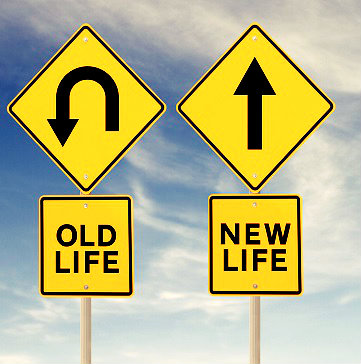 What we hear in recovery is that we have lost the power of choice with regards to our addiction. When we begin to use, we cannot stop. It isn’t that we don’t want to stop—many times we actually do want to stop very much. But we cannot. An obsession of the mind and a compulsion of the body crush any opposition we might muster.
What we hear in recovery is that we have lost the power of choice with regards to our addiction. When we begin to use, we cannot stop. It isn’t that we don’t want to stop—many times we actually do want to stop very much. But we cannot. An obsession of the mind and a compulsion of the body crush any opposition we might muster.
And then we hear about the choices we need to make to pursue recovery. But if we have lost the power of choice, how can we do anything besides surrender to the overwhelming power of addiction?
We cannot, when drinking or getting high, effectively choose to stop. But we can choose to become willing to get sober. We have seen that when alcohol, drugs or other addictions enter the picture, we lose our ability to say “no.” We can make a choice that this is a fight we’re no longer going to try to fight. We can decide to walk away altogether and never look back.
The Decision To End The Denial Of Addiction
The other choice we must make is to end our pattern of denial. How many years have we been saying there was no problem, really, or that we had this under control? Make the decision to begin looking at your life with a brutally bright light. Start to see that denial has been your defense and it’s killing you. It’s time to admit the truth. When you are ready to become honest, and to admit that you are indeed powerless, you open yourself to hope.
Stop Blaming Others For Your Addiction
As we sat languishing in our addictions we identified the people and the things we could blame for the state in which we found ourselves. It was our parents, our upbringing, our genetics, God, our bosses, spouses, kids, the government or some other institution. We thought ourselves justified: if “so and so” wasn’t the way he was or if this entity hadn’t done to us what it did, we wouldn’t be living this way. The next important choice we make is to stop blaming other people. Many people live hard lives, or have been the victims of injustice, or a bad childhood, and they aren’t drugging themselves to death. No one denies that perhaps life has dealt you a hard hand, but few will sympathize enough to say a drug addiction was a justified response. This is the path you have chosen, actually. And it is the path you can choose to get off of.
“We must never be blinded by the futile philosophy that we are just the hapless victims of our inheritance, of our life experience, and of our surroundings—that these are the sole forces that make our decisions for us. This is not the road to freedom. We have to believe that we can really choose.” (Bill W., Grapevine, Nov. 1960)
Read More About A Candid Story Of Surviving Addiction And Choosing Life In Recovery


